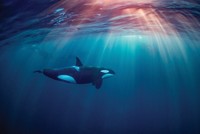Advertisement
Grab your lab coat. Let's get started
Welcome!
Welcome!
Create an account below to get 6 C&EN articles per month, receive newsletters and more - all free.
It seems this is your first time logging in online. Please enter the following information to continue.
As an ACS member you automatically get access to this site. All we need is few more details to create your reading experience.
Not you? Sign in with a different account.
Not you? Sign in with a different account.
ERROR 1
ERROR 1
ERROR 2
ERROR 2
ERROR 2
ERROR 2
ERROR 2
Password and Confirm password must match.
If you have an ACS member number, please enter it here so we can link this account to your membership. (optional)
ERROR 2
ACS values your privacy. By submitting your information, you are gaining access to C&EN and subscribing to our weekly newsletter. We use the information you provide to make your reading experience better, and we will never sell your data to third party members.
Environment
Persistent Organic Pollutants
August 27, 2007
| A version of this story appeared in
Volume 85, Issue 35
In the article "Persistent Organic Pollutants," I noticed that β-hexachlorocyclohexane (HCH, historically known as BHC, for benzene hydrochloride) was erroneously referred to as lindane (C&EN, July 16, page 6). Actually, the γ-isomer of HCH is the classic organochlorine pesticide known as lindane.
It does merit noting that a mixture of major HCH isomers including alpha, beta, gamma, and delta was formerly marketed widely around the world as "technical-grade BHC." In the U.S. and Europe, we tended to favor use of lindane because it was the isomer that exhibited the greatest degree of pesticidal efficacy.
Interestingly, β-HCH (or β-BHC) is the most hydrophobic and least reactive of the isomers as all chlorines occupy more commodious equatorial positions. In lindane, three chlorines are equatorial and three are axial.
Daniel W. Elliott
Lawrenceville, N.J.
An interesting and important addendum to "Persistent Organic Pollutants" is that nature generates numerous POPs, most notably polybrominated diphenyl ethers and 25 newly discovered polyhalogenated bipyrroles that have no industrial counterpart. Some of these natural polybrominated diphenyl ethers are identical to metabolites of anthropogenic POPs.
Recent work by Christopher M. Reddy, Walter Vetter, and others (Science 2005, 307, 917; Environ. Pollut. 2006, 144, 336 and 2007, 145, 668; Mar. Pollut. Bull. 2006, 52, 572; Mar. Ecol. Prog. Ser. 2006, 324, 167; Chemosphere 2006, 62, 197 and 2007, 66, 2011; Arch. Environ. Contam. Toxicol. 2006, 51, 135) shows that these natural POPs, which are believed to be biosynthesized by marine bacteria and sponges, bioaccumulate in fish, birds, marine mammals, and in the milk of Eskimo women who consume whale blubber. In some cases, the levels of these natural POPs dwarf those of man-made organohalogens. For example, the polychlorinated bipyrrole "Q1," which is ubiquitous in the marine environment and can be viewed as a PCB isostere, has been measured at 14 ppm in an Australian dolphin.
The natural origin of these organohalogens is beyond doubt, as established both by Reddy's radiocarbon data and his discovery of several polybrominated diphenyl ethers, halogenated bipyrroles, and Q1—but not DDE, a DDT metabolite, or any halogenated industrial chemical—in archived whale oil from the final voyage in 1921 of the Charles W. Morgan whaling ship years before the industrial production and bioaccumulation of organobromine flame retardants and other POPs.
Although the health consequences of these natural POPs are as yet unknown, any risk assessment of POPs must recognize and evaluate nature's contribution to environmental pollution.
Gordon W. Gribble
Hanover, N.H.





Join the conversation
Contact the reporter
Submit a Letter to the Editor for publication
Engage with us on Twitter